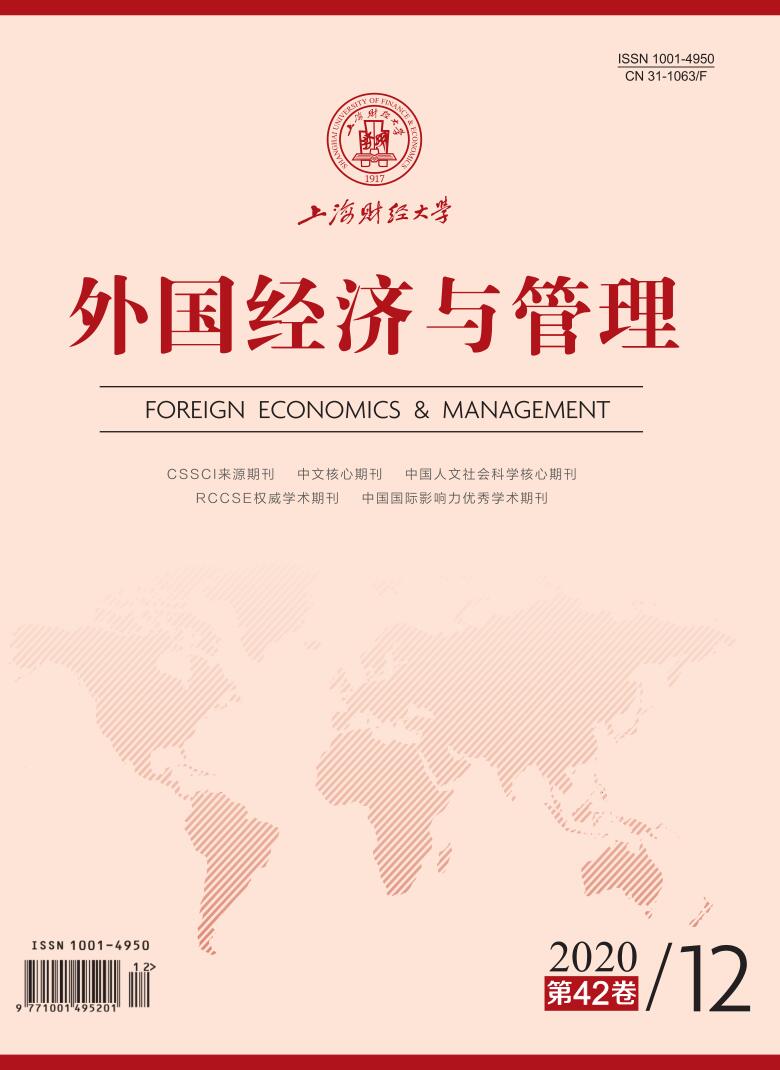本文以重庆、江苏的42家企业为案例样本,基于组织文化视角,结合中国制度转型背景下的政策环境特性,应用组态思维和模糊集定性比较分析方法整合了政策环境层面与组织文化层面的6个前因条件,探讨了影响企业创新的多重并发因素与因果复杂机制。研究发现:(1)单一的政策环境因素或组织创新文化因素无法有效激励企业创新,需要在相互间的联动匹配中共同影响创新绩效。(2)政策环境和组织创新文化相交互的创新模式是企业实现创新激励的最佳选择,并存在2类产生高创新绩效的创新模式,即价值观主导型和内外协同型。其中,内外协同型相较价值观主导型在企业创新绩效的提升上发挥着更加重要的作用。(3)产生非高创新绩效的模式有1类,且与导致高创新绩效的2类创新模式并非相互对立。研究结论拓展了政策环境与组织文化匹配的创新视角,有助于深入理解创新激励机制,为企业有效激励创新提供理论参考和有益启示。
政策与文化因素组态效应对企业创新的影响——一项基于fsQCA方法的研究
摘要
参考文献
2 伯努瓦•里豪克斯, 查尔斯•C•拉金著, 杜运周, 李永发译. QCA设计原理与应用: 超越定性与定量研究的新方法[M]. 北京: 机械工业出版社, 2017.
3 陈春花, 乐国林, 林洁芳, 等. 企业文化[M]. 3版. 北京: 机械工业出版社, 2018.
4 陈红, 张玉, 刘东霞. 政府补助、税收优惠与企业创新绩效——不同生命周期阶段的实证研究[J]. 南开管理评论,2019, (3): 187-200. DOI:10.3969/j.issn.1008-3448.2019.03.017
6 陈向东, 胡萍. 我国技术创新政策效用实证分析[J]. 科学学研究,2004, (1): 108-112. DOI:10.3969/j.issn.1003-2053.2004.01.021
7 杜运周, 贾良定. 组态视角与定性比较分析(QCA): 管理学研究的一条新道路[J]. 管理世界,2017, (6): 155-167. DOI:10.3969/j.issn.1002-5502.2017.06.011
9 胡婉丽. 知识型雇员创新行为意愿测量工具研究: 量表开发、提炼与检验[J]. 科技进步与对策,2013, (1): 140-145. DOI:10.6049/kjjbydc.2011110569
10 李晨光, 张永安. 集群创新科技政策“效用—响应”测度分类研究[J]. 中国科技论坛,2012, (10): 24-30. DOI:10.3969/j.issn.1002-6711.2012.10.005
12 李颖, 赵文红, 周密. 政府支持、创业导向对创业企业创新绩效的影响研究[J]. 管理学报,2018, (6): 847-855. DOI:10.3969/j.issn.1672-884x.2018.06.007
19 杨付, 张丽华. 团队成员认知风格对创新行为的影响: 团队心理安全感和工作单位结构的调节作用[J]. 南开管理评论,2012, (5): 13-25. DOI:10.3969/j.issn.1008-3448.2012.05.003
23 周海涛, 张振刚. 政府研发资助方式对企业创新投入与创新绩效的影响研究[J]. 管理学报,2015, (12): 1797-1804. DOI:10.3969/j.issn.1672-884x.2015.12.009
24 Ajzen I, Fishbein M. Understanding attitudes and predicting social behavior[M]. Englewood Cliffs, NJ: Prentice-Hall, 1980.
25 Berson Y, Oreg S, Dvir T. CEO values, organizational culture and firm outcomes[J]. Journal of Organizational Behavior,2008, 29(5): 615-633. DOI:10.1002/job.499
26 Bowman E H, Hurry D. Strategy through the option lens: An integrated view of resource investments and the incremental-choice process[J]. Academy of Management Review,1993, 18(4): 760-782. DOI:10.5465/amr.1993.9402210157
27 Brettel M, Cleven N J. Innovation culture, collaboration with external partners and NPD performance[J]. Creativity and Innovation Management,2011, 20(4): 253-272. DOI:10.1111/j.1467-8691.2011.00617.x
28 Fiss P C. A set-theoretic approach to organizational configurations[J]. Academy of Management Review,2007, 32(4): 1180-1198. DOI:10.5465/amr.2007.26586092
29 Gregory B T, Harris S G, Armenakis A A, et al. Organizational culture and effectiveness: A study of values, attitudes, and organizational outcomes[J]. Journal of Business Research,2009, 62(7): 673-679. DOI:10.1016/j.jbusres.2008.05.021
30 Hogan S J, Coote L V. Organizational culture, innovation, and performance: A test of Schein’s model[J]. Journal of Business Research,2014, 67(8): 1609-1621. DOI:10.1016/j.jbusres.2013.09.007
31 Homburg C, Pflesser C. A multiple-layer model of market-oriented organizational culture: Measurement issues and performance outcomes[J]. Journal of Marketing Research,2000, 37(4): 449-462. DOI:10.1509/jmkr.37.4.449.18786
34 Martín-de Castro G, Delgado-Verde M, Navas-López J E, et al. The moderating role of innovation culture in the relationship between knowledge assets and product innovation[J]. Technological Forecasting and Social Change,2013, 80(2): 351-363. DOI:10.1016/j.techfore.2012.08.012
35 O’Reilly C. Corporations, culture, and commitment: Motivation and social control in organizations[J]. California Management Review,1989, 31(4): 9-25. DOI:10.2307/41166580
37 Pfeffer J, Salancik G R. The external control of organizations. A resource dependence perspective[M]. New York: Harper & Row, 1979: 23.
38 Ragin C C. Redesigning social inquiry: fuzzy sets and beyond[M]. Chicago: University of Chicago Press, 2008.
39 Schein E H. Organizational culture and leadership[M]. 2nd ed. San Francisco: Jossey-Bass, 1992.
40 Schneider C Q, Wagemann C. Set-theoretic methods for the social sciences: A guide to qualitative comparative analysis[M]. Cambridge: Cambridge University Press, 2012.
41 Thornberry D M. Fostering a culture of innovation[J]. Proceedings of the United States Naval Institute,2003, 129(4): 44-48.
42 Zhang Y, Li H Y. Innovation search of new ventures in a technology cluster: The role of ties with service intermediaries[J]. Strategic Management Journal,2010, 31(1): 88-109. DOI:10.1002/smj.806
引用本文
石声萍, 何新月, 杨刚, 等. 政策与文化因素组态效应对企业创新的影响——一项基于fsQCA方法的研究[J]. 外国经济与管理, 2020, 42(12): 89-103.
导出参考文献,格式为:






 12670
12670  26014
26014

